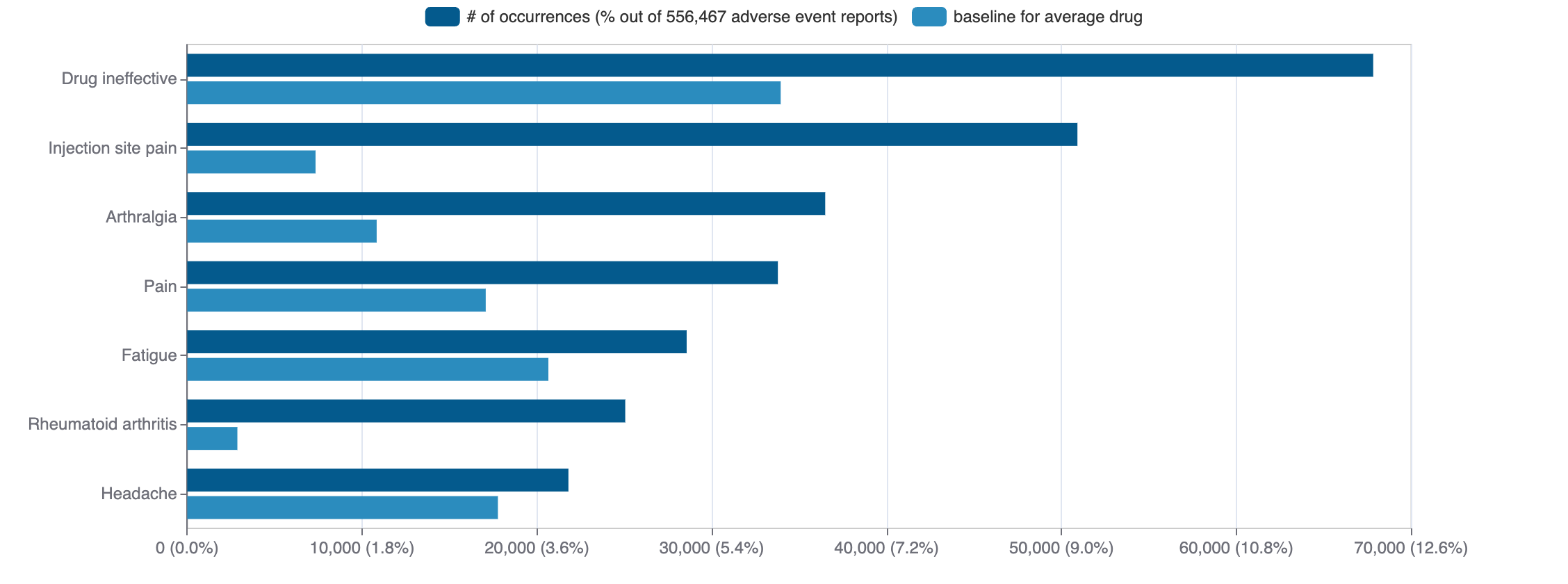Saracatinib
Saracatinib is a small molecule pharmaceutical. It is currently being investigated in clinical studies. The pharmaceutical is active against tyrosine-protein kinase Lck, proto-oncogene tyrosine-protein kinase Src, tyrosine-protein kinase ABL1, and tyrosine-protein kinase Yes.
Download report
Favorite
Commercial
Therapeutic Areas
No data
Trade Name
FDA
EMA
No data
Drug Products
FDA
EMA
New Drug Application (NDA)
New Drug Application (NDA)
Abbreviated New Drug Application (ANDA)
Abbreviated New Drug Application (ANDA)
No data
Labels
FDA
EMA
No data
Indications
FDA
EMA
No data
Agency Specific
FDA
EMA
No data
Patent Expiration
No data
ATC Codes
No data
HCPCS
No data
Clinical
Clinical Trials
34 clinical trials
View more details

Mock data
Subscribe for the real data
Subscribe for the real data
Indications Phases 4
No data
Indications Phases 3
Indication | MeSH | Ontology | ICD-10 | Ph 1 | Ph 2 | Ph 3 | Ph 4 | Other | Total |
|---|---|---|---|---|---|---|---|---|---|
| Ovarian neoplasms | D010051 | EFO_0003893 | C56 | — | 2 | 1 | — | — | 2 |
| Fallopian tube neoplasms | D005185 | — | 1 | 1 | — | — | 1 |
Indications Phases 2
Indication | MeSH | Ontology | ICD-10 | Ph 1 | Ph 2 | Ph 3 | Ph 4 | Other | Total |
|---|---|---|---|---|---|---|---|---|---|
| Neoplasms | D009369 | C80 | 4 | 1 | — | — | — | 5 | |
| Breast neoplasms | D001943 | EFO_0003869 | C50 | 1 | 3 | — | — | — | 3 |
| Prostatic neoplasms | D011471 | C61 | — | 3 | — | — | — | 3 | |
| Non-small-cell lung carcinoma | D002289 | 1 | 1 | — | — | — | 2 | ||
| Alzheimer disease | D000544 | EFO_0000249 | F03 | 1 | 1 | — | — | — | 2 |
| Alcohol drinking | D000428 | EFO_0004329 | 1 | 1 | — | — | — | 2 | |
| Lymphangioleiomyomatosis | D018192 | J84.81 | 1 | 1 | — | — | — | 2 | |
| Pancreatic neoplasms | D010190 | EFO_0003860 | C25 | 1 | 2 | — | — | — | 2 |
| Adenocarcinoma | D000230 | — | 2 | — | — | — | 2 | ||
| Bone neoplasms | D001859 | EFO_0003820 | D16 | — | 1 | — | — | — | 1 |
Show 24 more
Indications Phases 1
Indication | MeSH | Ontology | ICD-10 | Ph 1 | Ph 2 | Ph 3 | Ph 4 | Other | Total |
|---|---|---|---|---|---|---|---|---|---|
| Healthy volunteers/patients | — | 2 | — | — | — | — | 2 | ||
| Ovarian epithelial carcinoma | D000077216 | 1 | — | — | — | — | 1 | ||
| Parkinson disease | D010300 | EFO_0002508 | G20 | 1 | — | — | — | — | 1 |
| Alcoholism | D000437 | EFO_0003829 | F10.1 | 1 | — | — | — | — | 1 |
Indications Without Phase
No data
Epidemiology
Epidemiological information for investigational and approved indications
View more details
Drug
General
| Drug common name | SARACATINIB |
| INN | saracatinib |
| Description | Saracatinib is a member of the class of quinazolines that is quinazoline substituted by (5-chloro-2H-1,3-benzodioxol-4-yl)amino, (oxan-4-yl)oxy and 2-(4-methylpiperazin-1-yl)ethoxy groups at positions 4, 5 and 7, respectively. It is a dual inhibitor of the tyrosine kinases c-Src and Abl (IC50 = 2.7 and 30 nM, respectively). Saracatinib was originally developed by AstraZeneca for the treatment of cancer but in 2019 it was granted orphan drug designation by the US Food and Drug Administration for the treatment of idiopathic pulmonary fibrosis (IPF), a type of lung disease that results in scarring (fibrosis) of the lungs. It has a role as an antineoplastic agent, an EC 2.7.10.2 (non-specific protein-tyrosine kinase) inhibitor, a radiosensitizing agent, an autophagy inducer, an apoptosis inducer and an anticoronaviral agent. It is a member of quinazolines, a secondary amino compound, a N-methylpiperazine, an aromatic ether, a member of oxanes, a member of benzodioxoles, an organochlorine compound and a diether. |
| Classification | Small molecule |
| Drug class | tyrosine kinase inhibitors |
| Image (chem structure or protein) | |
| Structure (InChI/SMILES or Protein Sequence) | CN1CCN(CCOc2cc(OC3CCOCC3)c3c(Nc4c(Cl)ccc5c4OCO5)ncnc3c2)CC1 |
Identifiers
| PDB | 2H8H |
| CAS-ID | 379231-04-6 |
| RxCUI | — |
| ChEMBL ID | CHEMBL217092 |
| ChEBI ID | — |
| PubChem CID | 10302451 |
| DrugBank | DB11805 |
| UNII ID | 9KD24QGH76 (ChemIDplus, GSRS) |
Target
Agency Approved
LCK
LCK
SRC
SRC
ABL1
ABL1
YES1
YES1
Organism
Homo sapiens
Gene name
LCK
Gene synonyms
NCBI Gene ID
Protein name
tyrosine-protein kinase Lck
Protein synonyms
Leukocyte C-terminal Src kinase, LSK, Lymphocyte cell-specific protein-tyrosine kinase, p56(LSTRA) protein-tyrosine kinase, p56-LCK, Protein YT16, Proto-oncogene Lck, proto-oncogene tyrosine-protein kinase LCK, T cell-specific protein-tyrosine kinase, T-lymphocyte specific protein tyrosine kinase p56lck
Uniprot ID
Mouse ortholog
Lck (16818)
proto-oncogene tyrosine-protein kinase LCK (Q91X65)
Alternate
No data
Variants
Clinical Variant
No data
Financial
No data
Trends
PubMed Central
Top Terms for Disease or Syndrome:

Mock data
Subscribe for the real data
Subscribe for the real data
Additional graphs summarizing 1,776 documents
View more details
Safety
Black-box Warning
No Black-box warning
Adverse Events
Top Adverse Reactions

Mock data
Subscribe for the real data
Subscribe for the real data
3 adverse events reported
View more details
Premium feature
Learn more about premium features at pharmakb.com
Learn more
